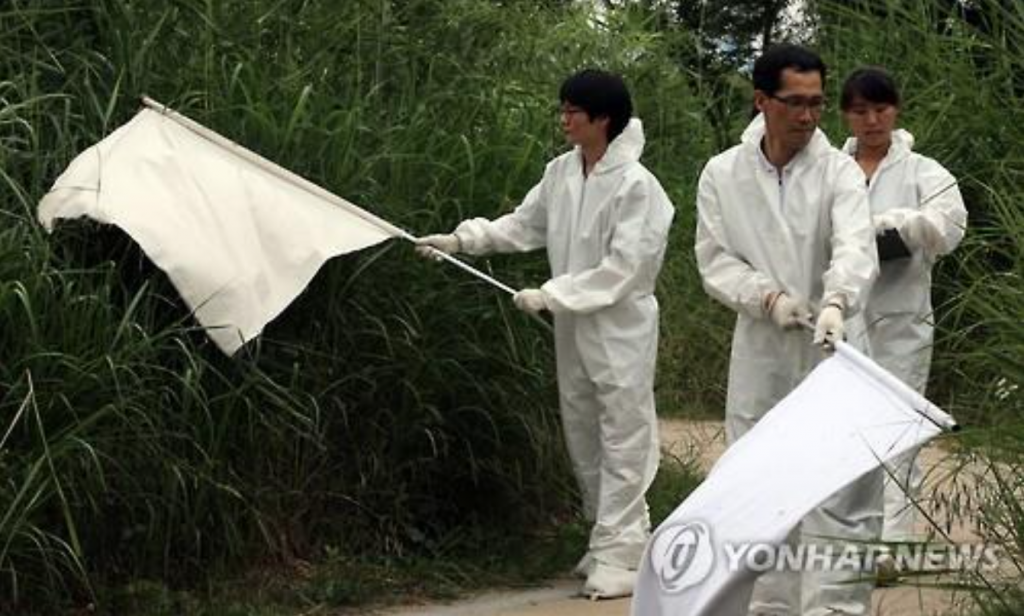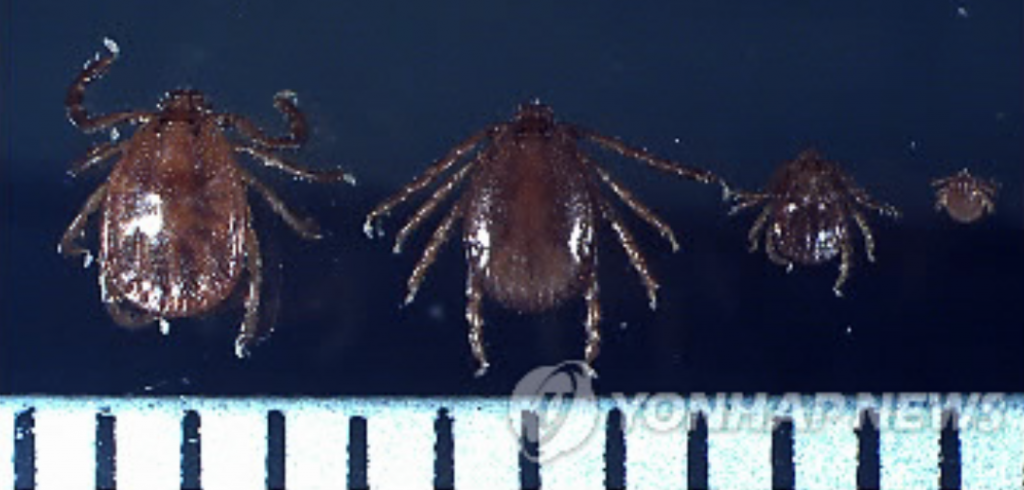
“With the prolonged heat wave, we captured about 50 percent more of these mites when we were out to collect specimens,” said research professor Lee Hwae-sun from Chonbuk National University. (image: Yonhap)
SEOUL, Aug. 16 (Korea Bizwire) – With Korea suffering from its worst heat wave since 1994, the unusual weather has provided the perfect breeding environment for deadly mites (Haemaphysalis longicornis) that transmit SFTS (severe fever with thrombocytopenia syndrome).
According to health authorities, deadly mites have grown much more energetic this year due to this summer’s prolonged extra-high temperatures, and 41 individuals have already become infected with SFTS, a 31 percent increase compared to 2015.
SFTS has a fatality rate that reaches up to 30 percent, and its virus has no known vaccine or medical treatment. Some of the syndrome’s noticeable symptoms include high fever, muscular pain, vomiting, and diarrhea, and in extreme cases, convulsion and fainting. It was first confirmed in 2013 in Korea, killing 17 of 36 infected patients. The number of patients has steadily increased since to 55 in 2014 (16 deaths), and 79 in 2015 (21 deaths).
“Amid the prolonged heat wave, we captured about 50 percent more of these mites when we were out to collect specimens,” said research professor Lee Hwae-sun from Chonbuk National University. “And because there is no vaccine or medication for treatment, the SFTS fatality rate is high. The rate for 2013 was 40 percent, and although it has declined since, it’s still in the 30 percent range.”
He added that these killer mites tend to inhabit areas close to ponds, streams, and rivers, and near animal farms where food sources are most abundant.

He added that these killer mites tend to inhabit areas close to ponds, streams, and rivers, and near animal farms where food sources are most abundant. (image: Yonhap)
“Livestock farmers and vacationers visiting such areas need to take extra precautions,” he added.
Lee also pointed out that because vaccines and medicines take a long time to develop and commercialize, the development of insecticides should also be carried out alongside vaccine research to diminish the mite population across the country.
The mites are most active from July to October, and experts advise against outdoor activities in grasslands, by riversides, and within a 10km vicinity of animal farms. They also encourage farmers, who are more exposed to such areas, to wear long sleeves and pants, and to make sure to shower after outdoor labor.
“If one senses SFTS-related symptoms after engaging in outdoor activities, he or she must visit a medical facility for a checkup and a medical treatment,” said an official from the Korea Centers for Disease Control & Prevention. “Early discovery can lower the fatality rate by a significant amount.”
By Joseph Shin (jss539@koreabizwire.com)






